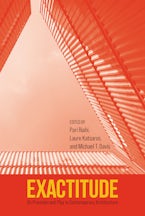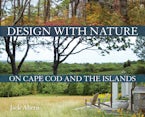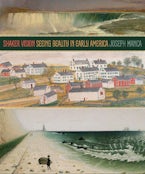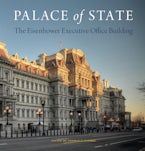- Home
- Transatlantic Romanticism

Transatlantic Romanticism
British and American Art and Literature, 1790-1860
Edited by Andrew Hemingway and Alan Wallach
Published by: University of Massachusetts Press
336 Pages, 7.00 x 10.00 x 1.10 in, 24 color illus., 53 b&w illus.
Other Retailers:
That the Romantic movement was an international phenomenon is a commonplace, yet to date, historical study of the movement has tended to focus primarily on its national manifestations. This volume offers a new perspective. In thirteen chapters devoted to artists and writers of the late eighteenth and early nineteenth centuries, leading scholars of the period examine the international exchanges that were crucial for the rise of Romanticism in England and the United States.
In the book's introduction, Andrew Hemingway—building on the theoretical work of Michael Lowy and Robert Sayre—proposes that we need to remobilize the concept of Weltanschauung, or comprehensive worldview, in order to develop the kind of synthetic history of arts and ideas the phenomenon of Romanticism demands. The essays that follow focus on the London and New York art worlds and such key figures as Benjamin West, Thomas Bewick, John Vanderlyn, Washington Allston, John Martin, J. M. W. Turner, Thomas Cole, James Fenimore Cooper, George Catlin, Edgar Allan Poe, Harriet Beecher Stowe, and Herman Melville. Taken together, these essays plot the rise of a romantic anti-capitalist Weltanschauung as well as the dialectic between Romanticism's national and international manifestations.
In addition to the volume editors, contributors include Matthew Beaumont, David Bindman, Leo Costello, Nicholas Grindle, Wayne Franklin, Janet Koenig, William Pressly, Robert Sayre, William Truettner, Dell Upton, and William Vaughan.
In the book's introduction, Andrew Hemingway—building on the theoretical work of Michael Lowy and Robert Sayre—proposes that we need to remobilize the concept of Weltanschauung, or comprehensive worldview, in order to develop the kind of synthetic history of arts and ideas the phenomenon of Romanticism demands. The essays that follow focus on the London and New York art worlds and such key figures as Benjamin West, Thomas Bewick, John Vanderlyn, Washington Allston, John Martin, J. M. W. Turner, Thomas Cole, James Fenimore Cooper, George Catlin, Edgar Allan Poe, Harriet Beecher Stowe, and Herman Melville. Taken together, these essays plot the rise of a romantic anti-capitalist Weltanschauung as well as the dialectic between Romanticism's national and international manifestations.
In addition to the volume editors, contributors include Matthew Beaumont, David Bindman, Leo Costello, Nicholas Grindle, Wayne Franklin, Janet Koenig, William Pressly, Robert Sayre, William Truettner, Dell Upton, and William Vaughan.
Andrew Hemingway is professor emeritus of art history, University College London, and author of The Mysticism of Money: Precisionist Painting and Machine Age America. Alan Wallach is professor emeritus of art and art history, The College of William and Mary, and author of Exhibiting Contradiction: Essays on the Art Museum in the United States (University of Massachusetts Press, 1998).
"A cogent and stimulating series of reflections on Anglo-American art and literature associated with the broad cultural category of Romanticism."—Brian Lukacher, author of Joseph Gandy: Architectural Visionary in Georgian England
"The historiography of Romanticism is a sub-theme of many essays, thereby generating discussion vital to the study of individual artists and art history itself. Recommended."—Choice
"Clear and sophisticated. . . . This volume is a sumptuous contribution to that subfield of transatlantic studies that regards Anglo-American culture as a hybrid phenomenon--a symbiosis, one might say."—European Romantic Review
"Beautifully designed by Dennis Anderson, the anthology contains numerous figures and 24 color plates, all rendered on high-quality paper. Indeed this volume is a sumptuous contribution to that subfield of transatlantic studies that regards Anglo-American culture as a hybrid phenomenon--a symbiosis, one might say."—European Romantic Review











